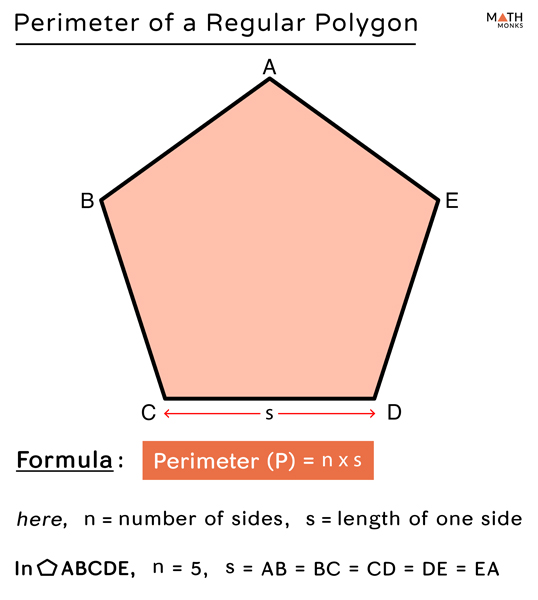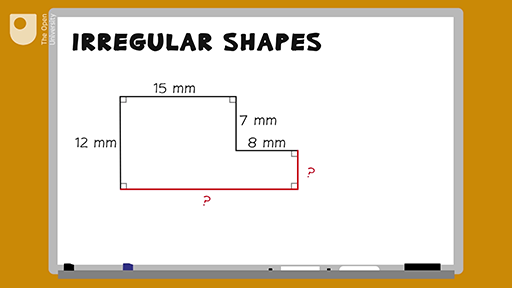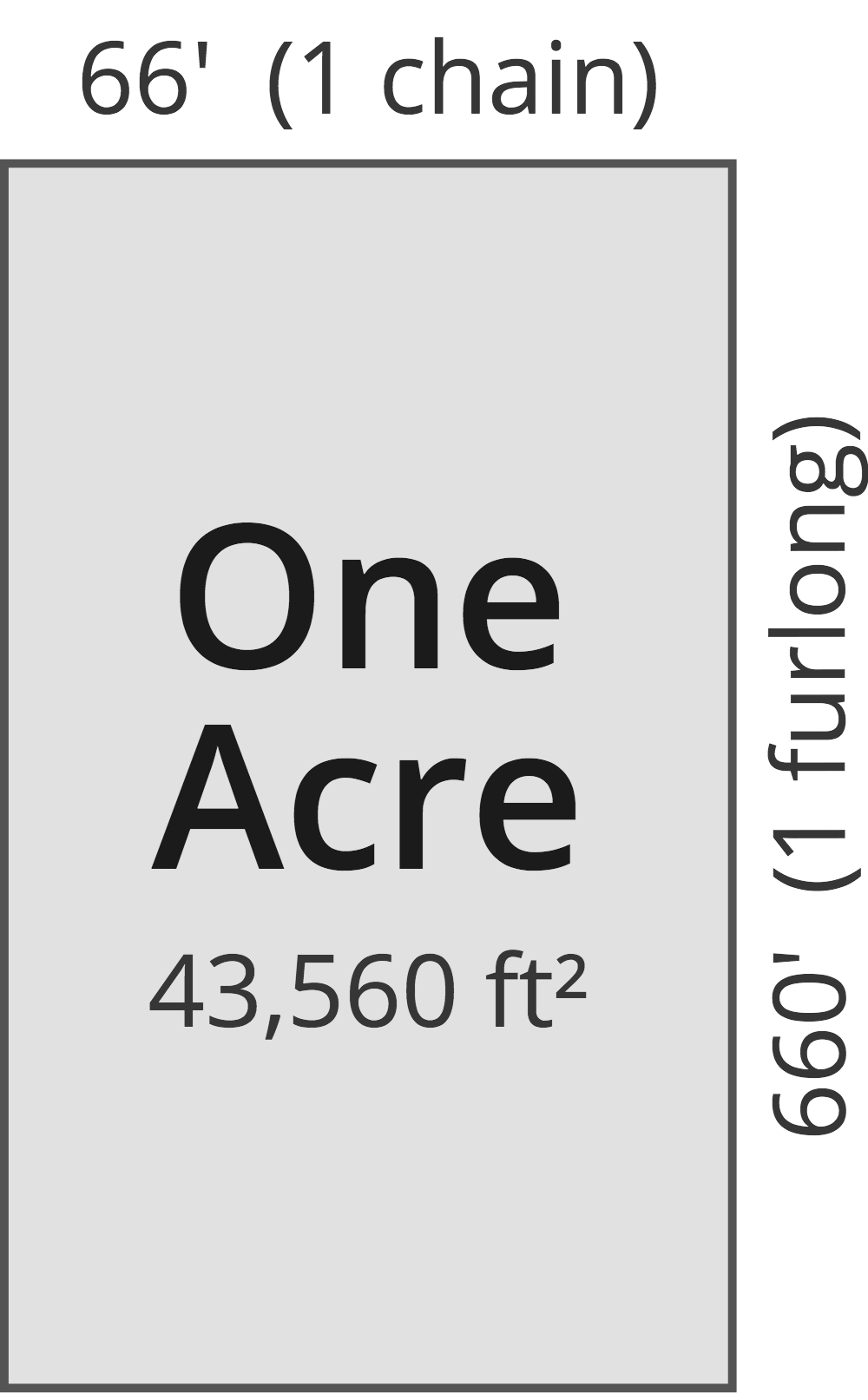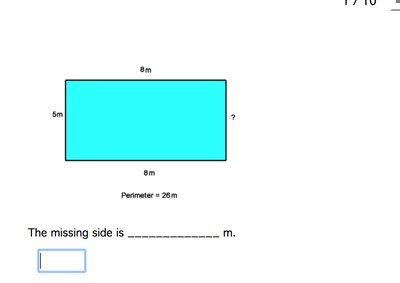Topic how can you find the perimeter of the rhombus: Discover the methods to easily calculate the perimeter of a rhombus. Whether you know the side length or the diagonals, this guide will provide clear formulas and examples to help you understand and apply the concepts effectively. Learn how to determine the perimeter using different given dimensions.
Table of Content
How to Find the Perimeter of a Rhombus
A rhombus is a quadrilateral with all four sides of equal length. There are several methods to calculate its perimeter depending on the known dimensions.
Perimeter Using Side Length
If the side length of the rhombus is known, the perimeter (P) can be calculated using the formula:
For example, if each side of the rhombus is 8 cm:
\( P = 4 \times 8 = 32 \text{ cm} \)
Perimeter Using Diagonals
If the lengths of the diagonals (d1 and d2) are known, the perimeter can be calculated using the formula derived from the Pythagorean theorem:
For example, if the diagonals are 8 cm and 12 cm:
\( P = 2 \sqrt{8^2 + 12^2} = 2 \sqrt{64 + 144} = 2 \sqrt{208} \approx 28.84 \text{ cm} \)
Perimeter Using One Diagonal and One Angle
If one diagonal (d) and one angle (θ) are known, you can find the side length (s) first and then calculate the perimeter:
Once you have the side length, use \( P = 4s \) to find the perimeter.
Summary
The perimeter of a rhombus can be calculated in various ways depending on the known dimensions. The key formulas are:
- Using side length: \( P = 4 \times \text{side length} \)
- Using diagonals: \( P = 2 \sqrt{d_1^2 + d_2^2} \)
- Using one diagonal and one angle: Find side length using \( s = \frac{d}{2 \cos(\theta/2)} \) and then \( P = 4s \)
Understanding these methods allows for flexibility in solving problems related to the perimeter of a rhombus.

READ MORE:
Introduction
A rhombus is a special type of quadrilateral with all four sides of equal length. Finding the perimeter of a rhombus is a fundamental concept in geometry, useful in various practical applications. The perimeter, which is the total distance around the shape, can be calculated using simple formulas. In this section, we will explore how to find the perimeter of a rhombus step-by-step.
-
If you know the length of one side of the rhombus, the perimeter can be calculated using the formula:
\( P = 4s \)
where \( s \) is the length of a side. For example, if each side of the rhombus is 8 cm, the perimeter is:
\( P = 4 \times 8 = 32 \) cm. -
If the lengths of the diagonals of the rhombus are known, you can use the Pythagorean theorem to find the side length and then calculate the perimeter. The formula is:
\( P = 2 \sqrt{d_1^2 + d_2^2} \)
where \( d_1 \) and \( d_2 \) are the lengths of the diagonals. For example, if the diagonals are 6 cm and 8 cm, first find the side length:
\( s = \sqrt{\left(\frac{d_1}{2}\right)^2 + \left(\frac{d_2}{2}\right)^2} = \sqrt{\left(\frac{6}{2}\right)^2 + \left(\frac{8}{2}\right)^2} = \sqrt{3^2 + 4^2} = 5 \) cm.
Then, calculate the perimeter:
\( P = 4 \times 5 = 20 \) cm.
Basic Definition
A rhombus is a type of quadrilateral where all four sides have equal length. It is also known as an equilateral quadrilateral. A rhombus can be seen as a slanted square and has several distinct properties:
- All sides of a rhombus are of equal length.
- Opposite sides of a rhombus are parallel.
- Opposite angles are equal, while adjacent angles are supplementary (add up to 180 degrees).
- The diagonals of a rhombus bisect each other at right angles (90 degrees).
These properties can be used to determine other measurements of a rhombus, such as its area and perimeter. To calculate the perimeter of a rhombus when the side length is known, use the formula:
\( P = 4a \)
Where \( P \) is the perimeter and \( a \) is the length of one side.
When the lengths of the diagonals are known, the perimeter can also be found using the formula:
\( P = 2 \sqrt{p^2 + q^2} \)
Where \( p \) and \( q \) are the lengths of the diagonals.
Formulas for Finding the Perimeter
Finding the perimeter of a rhombus involves understanding its basic properties and using specific formulas based on the given dimensions. Here are the detailed methods to find the perimeter of a rhombus:
- With Side Length:
The most straightforward method is using the length of one side of the rhombus. Since all sides of a rhombus are equal, the formula is:
$$P = 4s$$
where \(P\) is the perimeter and \(s\) is the side length.
For example, if the side length \(s\) is 5 cm, then the perimeter \(P\) is:
$$P = 4 \times 5 = 20 \text{ cm}$$
- With Diagonals:
If the lengths of the diagonals are known, the perimeter can be calculated using the formula derived from the Pythagorean theorem:
$$P = 2\sqrt{d_1^2 + d_2^2}$$
where \(d_1\) and \(d_2\) are the lengths of the diagonals.
For example, if \(d_1\) is 6 cm and \(d_2\) is 8 cm, then the perimeter \(P\) is:
$$P = 2\sqrt{6^2 + 8^2} = 2\sqrt{36 + 64} = 2\sqrt{100} = 20 \text{ cm}$$
- With One Diagonal and One Angle:
If one diagonal and an angle are known, the side length can first be calculated using trigonometric relations, and then the perimeter can be determined. This method is more complex and often involves additional steps:
Step 1: Calculate the half-diagonal using trigonometric functions.
Step 2: Use the Pythagorean theorem to find the side length.
Step 3: Apply the side length formula \(P = 4s\).
Example Problems
Understanding how to calculate the perimeter of a rhombus can be simplified through practical examples. Below are a few step-by-step problems to illustrate different scenarios.
-
Example Problem 1: Find the perimeter of a rhombus with a side length of 10 cm.
- Since the side length is given, use the formula \( P = 4s \).
- \( P = 4 \times 10 = 40 \) cm
- The perimeter of the rhombus is 40 cm.
-
Example Problem 2: A rhombus-shaped table has a perimeter of 192 cm. What is the length of one side?
- Use the formula \( P = 4s \) and solve for \( s \).
- \( 192 = 4s \)
- \( s = \frac{192}{4} = 48 \) cm
- Each side of the table is 48 cm long.
-
Example Problem 3: Find the perimeter of a rhombus with diagonals measuring 12 cm and 16 cm.
- First, find the side length using the formula \( s = \sqrt{\left(\frac{d_1}{2}\right)^2 + \left(\frac{d_2}{2}\right)^2} \).
- \( s = \sqrt{\left(\frac{12}{2}\right)^2 + \left(\frac{16}{2}\right)^2} = \sqrt{6^2 + 8^2} = \sqrt{36 + 64} = \sqrt{100} = 10 \) cm
- Now, use the perimeter formula \( P = 4s \).
- \( P = 4 \times 10 = 40 \) cm
- The perimeter of the rhombus is 40 cm.

Properties and Characteristics
A rhombus, a special type of quadrilateral, possesses unique properties and characteristics that distinguish it from other polygons. Understanding these features is key to mastering its geometric properties.
- Equal Side Lengths
- Diagonals Bisecting Each Other at Right Angles
- \[ d_1 \] and \[ d_2 \] intersect at right angles.
- Each half of the diagonals is equal: \[ \frac{d_1}{2} \] and \[ \frac{d_2}{2} \].
- Diagonals as Perpendicular Bisectors
- Symmetry
- Relationship with Other Quadrilaterals
- Angle Properties
All four sides of a rhombus are of equal length. This equality of sides is the defining characteristic of a rhombus. If each side is denoted as \( s \), then:
\[ s_1 = s_2 = s_3 = s_4 = s \]
The diagonals of a rhombus intersect each other at right angles (90 degrees) and bisect each other. This means each diagonal divides the other into two equal parts. If the diagonals are \( d_1 \) and \( d_2 \), then:
Due to the bisecting property, the diagonals divide the rhombus into four right-angled triangles. Each triangle is congruent, making them equal in area. The length of the diagonals can be used to calculate the area of the rhombus as:
\[ \text{Area} = \frac{1}{2} \times d_1 \times d_2 \]
A rhombus has two lines of symmetry along its diagonals. It also exhibits rotational symmetry of order 2, meaning it looks the same when rotated by 180 degrees.
A rhombus is a specific type of parallelogram where all sides are equal. Therefore, it inherits all the properties of a parallelogram, such as opposite sides being parallel and equal. Additionally, a square is a special type of rhombus with all right angles.
The opposite angles of a rhombus are equal, and the adjacent angles are supplementary (adding up to 180 degrees). If one angle is \( \theta \), then the opposite angle is also \( \theta \), and the adjacent angles are \( 180^\circ - \theta \).
| Property | Description |
|---|---|
| Equal Sides | All four sides are of equal length. |
| Perpendicular Diagonals | Diagonals intersect at right angles and bisect each other. |
| Symmetry | Two lines of symmetry along the diagonals; rotational symmetry of order 2. |
| Relation to Parallelogram | A rhombus is a type of parallelogram with all sides equal. |
| Angle Properties | Opposite angles are equal; adjacent angles are supplementary. |
Advanced Topics
Exploring advanced topics related to the perimeter of a rhombus can deepen your understanding of geometric principles and their applications. This section covers practical uses, coordinate geometry methods, and comparative analysis with other quadrilaterals.
- Applications of Perimeter in Real Life
- Construction and Design: Knowing the perimeter is crucial for estimating materials required for framing or bordering structures like floors or gardens shaped as rhombuses.
- Land Measurement: The perimeter helps in calculating fencing requirements for land plots shaped as rhombuses.
- Textile Industry: Designing and cutting fabric pieces often involves understanding the perimeter to ensure accurate dimensions for patches or patterns.
- Finding Perimeter in Coordinate Geometry
- Comparative Analysis with Other Quadrilaterals
- Rhombus vs. Square: While both have equal side lengths, a square also has all right angles. The formula for the perimeter remains the same for both: \(4 \times \text{side length}\).
- Rhombus vs. Rectangle: A rectangle has opposite sides equal and all right angles. Its perimeter is calculated as \(2 \times (\text{length} + \text{width})\), unlike the rhombus, which uses equal sides for its calculation.
- Rhombus vs. Parallelogram: A rhombus is a type of parallelogram with equal sides. The perimeter of a parallelogram is \(2 \times (\text{length} + \text{width})\), which differs from the rhombus's formula.
- Exploring the Perimeter through Different Formulas
- Using Side Length: The simplest formula is \( P = 4 \times s \), where \( s \) is the length of one side.
- Using Diagonals: When the diagonals \( d_1 \) and \( d_2 \) are known, use the formula \( P = 2 \sqrt{d_1^2 + d_2^2} \).
- Using One Diagonal and Angle: If one diagonal \( d_1 \) and an angle \( \theta \) are known, derive the side using trigonometric relationships and then calculate the perimeter.
The concept of perimeter, including that of a rhombus, is used in various real-life scenarios, such as:
In coordinate geometry, the perimeter of a rhombus can be determined using the distance formula. Given the coordinates of the vertices \((x_1, y_1)\), \((x_2, y_2)\), \((x_3, y_3)\), and \((x_4, y_4)\), the side length can be calculated as:
\[ s = \sqrt{(x_2 - x_1)^2 + (y_2 - y_1)^2} \]
Since all sides are equal, the perimeter is:
\[ \text{Perimeter} = 4 \times s \]
Using this method, you can calculate the perimeter from any set of given vertex coordinates.
The rhombus is closely related to other quadrilaterals such as squares and rectangles. Understanding these relationships can provide insights into its geometric properties:
There are various ways to derive the perimeter of a rhombus depending on the available information:
| Topic | Description |
|---|---|
| Real-Life Applications | Construction, land measurement, and textile design often require knowledge of the perimeter of a rhombus. |
| Coordinate Geometry | Perimeter can be calculated using vertex coordinates and the distance formula. |
| Comparative Analysis | Comparing the rhombus with other quadrilaterals like squares and rectangles highlights its unique properties. |
| Different Formulas | Multiple methods exist to calculate the perimeter depending on known dimensions or angles. |
FAQs
- How can you find the perimeter of a rhombus?
- Using the side length: Multiply the length of one side by 4.
- Using the diagonals: Apply the formula: Perimeter = 2 √(d1² + d2²), where d1 and d2 are the lengths of the diagonals.
- Using one diagonal and one angle: Derive the side length from the given diagonal and angle and then use the formula for perimeter using side length.
- What are some common questions and answers related to finding the perimeter of a rhombus?
- Q: Can the perimeter of a rhombus be negative?
- A: No, the perimeter of a geometric figure cannot be negative. It represents the total distance around the figure and must be a positive value.
- Q: Can you find the perimeter of a rhombus if only one side length is given?
- A: Yes, if one side length is given, you can simply multiply it by 4 to find the perimeter of the rhombus.
- Q: How do you find the perimeter of a rhombus if only the lengths of diagonals are provided?
- A: You can use the formula: Perimeter = 2 √(d1² + d2²), where d1 and d2 are the lengths of the diagonals.
- What are some troubleshooting tips for common errors in finding the perimeter of a rhombus?
- Ensure that all measurements are accurate and properly labeled.
- Double-check the calculations to avoid errors in multiplication or addition.
- If using trigonometric functions to find side lengths from angles and diagonals, make sure to use the correct formulas and units.
- Where can I find additional resources for learning more about finding the perimeter of a rhombus?
To find the perimeter of a rhombus, you can use one of the following methods:
Common questions and answers related to finding the perimeter of a rhombus include:
Some troubleshooting tips for common errors include:
You can find additional resources in geometry textbooks, online educational websites, or by consulting with teachers or tutors.
Conclusion
- Understanding the various methods to find the perimeter of a rhombus is essential for mastering geometric problem-solving skills.
- By utilizing formulas based on side lengths, diagonals, and angles, one can efficiently calculate the perimeter of any rhombus.
- Example problems provide practical applications of these formulas, aiding in better comprehension and application.
- Properties such as equal side lengths and diagonals bisecting each other at right angles distinguish the rhombus from other quadrilaterals.
- Exploring advanced topics like real-life applications and comparative analysis enhances the understanding of the rhombus's perimeter and its significance in geometry.
- By addressing common questions and troubleshooting errors, learners can overcome challenges and improve their proficiency in finding the perimeter of a rhombus.
- Additional resources offer opportunities for further learning and exploration, enabling individuals to deepen their understanding of rhombuses and their perimeters.
- In conclusion, mastering the techniques for finding the perimeter of a rhombus empowers individuals to tackle complex geometric problems with confidence and precision.

Hãy tìm hiểu cách tính diện tích và chu vi của hình thoi trong video này.
Cách Tìm Diện Tích và Chu Vi của Hình Thoi
READ MORE:
Hãy tìm hiểu cách tính chu vi của hình thoi trong video này.
Cách Tính Chu Vi của Hình Thoi














